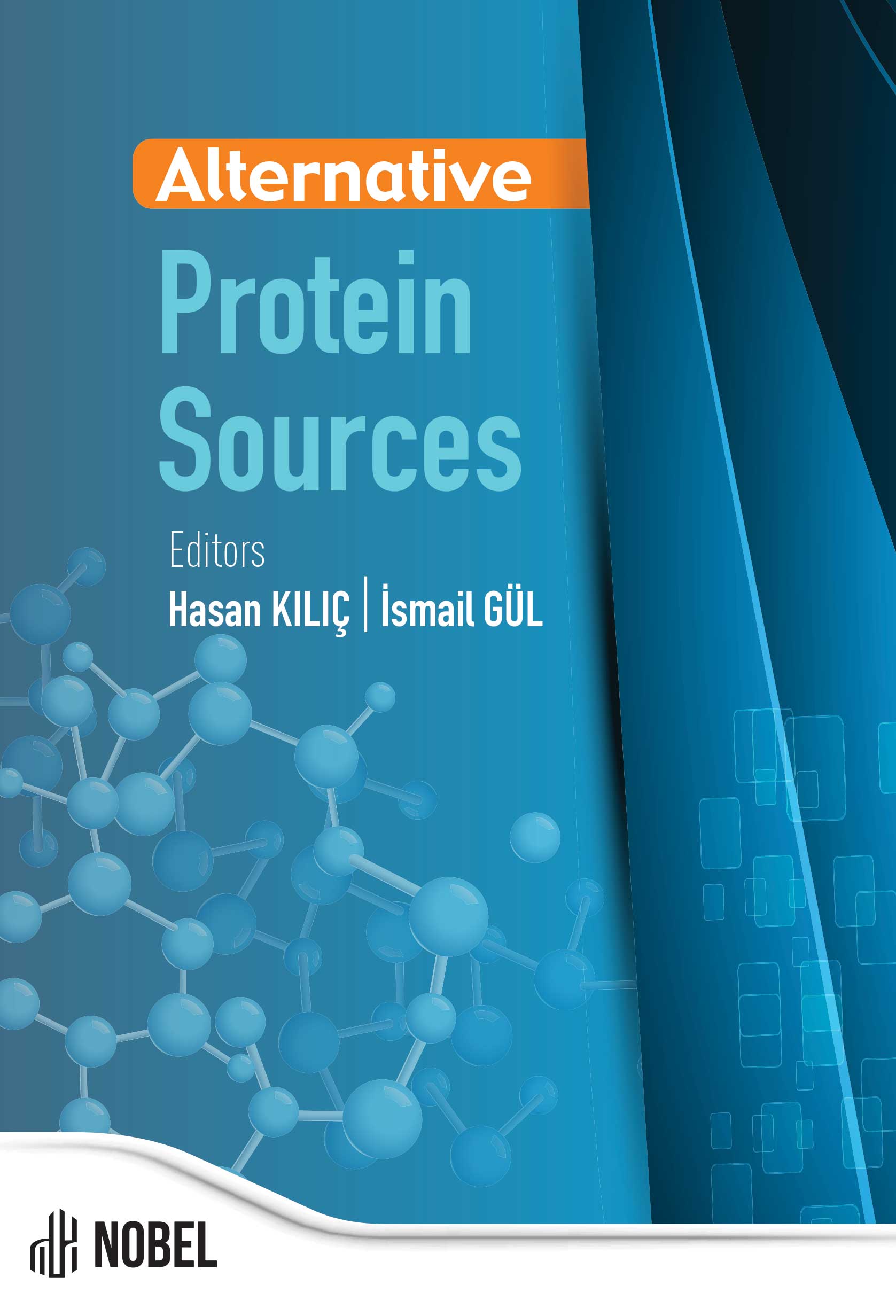The Importance of Orthoptera Insects in Agricultural Fields and Their Investigation As an Alternative Protein Source
Ali Satar (Author), Mustafa Ilcin (Author)
Release Date: 2024-06-03
Orthoptera is an order of insects that includes grasshoppers, crickets, katydids, and locusts. These insects are characterized by their large hind legs, adapted for jumping, and their ability to produce sound (stridulation) by rubbing certain body parts together. Certain species of grasshoppers can undergo a phase change to become locusts, forming large swarms that can [...]
Media Type
Buy from
Price may vary by retailers
| Work Type | Book Chapter |
|---|---|
| Published in | Alternative Protein Sources |
| First Page | 69 |
| Last Page | 99 |
| DOI | https://doi.org/10.69860/nobel.9786053359289.4 |
| Page Count | 31 |
| Copyright Holder | Nobel Tıp Kitabevleri |
| License | https://nobelpub.com/publish-with-us/copyright-and-licensing |
Ali Satar (Author)
Professor, Dicle University
https://orcid.org/0000-0002-8008-6291
3Ali SATAR, who graduated from Dicle University, Faculty of Science Department of Biology in 1992. He works on Orthoptera, Neuroptera and Diplura(Insecta). He completed his master’s degrees On Orthoptera of Kacadağ Mountain. The author who completed his Doctorate on order Neuroptera of South Eastern of Türkiye. Now he works at Dicle University as a Professor.
Mustafa Ilcin (Author)
Assistant Professor, Bingöl University
https://orcid.org/0000-0002-2542-9503
3Mustafa İLÇİN graduated from Dicle University, Biology Teaching Department in 2005. He received his master’s degree from Van YYÜ in 2007 and his PhD degree in Entomology from Dicle University Faculty of Science in 2015. Currently, he continues to work as a lecturer, Administrative Head, and Vice Dean at Bingöl University, Faculty of Agriculture, Department of Plant Protection.
Deligöz, İ. (2011). Bitki Patojeni Virüsler. Karadeniz Tarımsal Araştırma Merkezi. Samsun: 1-10.
Lodos, N. (1983). Turkish entomology (general, applied and faunistic). Vol. I.
Doğan, A. (2014). Derik ve Kızıltepe (Mardin) Orthoptera (Insecta) Faunasının Belirlenmesi, Yüksek Lisans Tezi. Dicle Üniv. Fen Bilimleri Enstitüsü. 46 s.
Satar, A. (1997). Dicle Havzası ve Karacadağ (Diyarbakır) Orthoptera Faunasının İncelenmesi (Doctoral dissertation, M. Sc. Thesis, Dicle University, Diyarbakır, Turkey).
İyriboz, N. & İleri, M. 1940. Çekirgeler. Zir. Vek. Neş. U. Say.: 484, Halk Bro. No: 11, Born. Zir. Müc ve İst. No: 32s.
Alkan, B. (1962). Türkiye’de Ziraat Bitkilerinin Genel Zararlıları Üzerinde İncelemeler. Ankara Üniv. Zir. Fak. Yay. 197, Çalışmalar 125, Ankara Üniv. Basımevi 32 s., Ankara.
Gümüşsuyu, İ. (1978) (A). Türkiye Gryllidae (Orthoptera) Faunası Üzerinde Sistematik Çalışmalar ile Türlerin Habitat ve Davranışlarına Ait Gözlemler. (Basılmamış Doç.Tezi).
Gümüşsuyu, İ. (1978) (B). Orta Anadolu Bölgesinde Bulunan Gryllidae (Orthoptera) Türlerinin Habitat Özellikleri ve Önemli Olanlarının Biyolojik Gözlemleri. Zir. Müc.Ar. Yıll., 84-86.
Uvarov, B. P. (1943) (a). Studies in The Orthoptera of Turkey. Iraq And Syria. Ibid., 10:21-112.
Bei-Bienko, G. Y. (1931). Some New Or İnteresting Orthoptera from Southern Caucasia. Boln.
Yalim, F. B., Sirin, D., Taylan, M. S., & Ciplak, B. (2004). Demirsoyus n. gen. (Orthoptera, Acrididae, Oedipodinae) and D. salmani n. sp. from the Mediterranean Anatolia with remarks on biogeography of the related genera. Transactions of the American Entomological Society, 425-437.
Anonymous 1993. New Guide Encyclopedia. Our page. Issue.1
Salman, S. (1978). Ağrı, Kars ve Artvin illerinin Orthoptera (Insecta) faunası üzerine taksonomik araştırmalar. Atatürk Üniv. Fen Fak. Yayınları, No. 82, Erzurum, 1978.
Cerritos, R., & Cano-Santana, Z. (2008). Harvesting grasshoppers Sphenarium purpurascens in Mexico for human consumption: a comparison with insecticidal control for managing pest outbreaks. Crop Protection, 27(3-5), 473-480.
Julieta Ramos-Elorduy, B., José Manuel Pino, M., & Víctor Hugo Martínez, C. (2012). Could Grasshoppers Be a Nutritive Meal? Food and Nutrition Sciences, 2012.
Hanboonsong, Y., & Durst, P. B. (2014). Edible insects in Lao PDR: building on tradition to enhance food security.
Barennes, H., Phimmasane, M., & Rajaonarivo, C. (2015). Insect consumption to address undernutrition, a national survey on the prevalence of insect consumption among adults and vendors in Laos. PloS one, 10(8), e0136458.
Van Huis, A., Dicke, M., & van Loon, J. J. (2015). Insects to feed the world. Journal of Insects as Food and Feed, 1(1), 3-5.
Premalatha, M., Abbasi, T., Abbasi, T. & Abbasi, S. A. (2011). Energy-efficient food production to reduce global warming and ecodegradation: The use of edible insects. Renewable and sustainable energy reviews, 15(9), 4357-4360.
Martin, D. (2014). Edible: An adventure into the world of eating insects and the last great hope to save the planet. Houghton Mifflin Harcourt.
Bukkens, S. G. (1997). The nutritional value of edible insects. Ecology of Food and Nutrition, 36(2-4), 287-319.
Kurgun, H. (2017). Nörogastronomi, Kurgun, H. Editör), Gastronomi trendleri milenyum ve ötesi içinde (24-35). Ankara: Detay Yayıncılık.
Durst, P. B., Johnson, D. V., Leslie, R. N., & Shono, K. (2010). Forest insects as food: humans bite back. RAP publication, 1(1), 1-241.
Kraig, B. (2004). Entomophagy. Hosking, R. (Ed.), Wild Food: Proceedings of the Oxford Symposium on Food and Cookery, İçinde (176-183), Great Britain: Prospect Books.
Paul, A., Frederich, M., Uyttenbroeck, R., Hatt, S., Malik, P., Lebecque, S. & Danthine, S. (2016). Grasshoppers as a food source? A review. Biotechnologie, Agronomie, Société et Environnement 20 (AgricultureIsLife).
Singh, A. & Sharma, A.L. (2014). Agriculturally Important Insect Diversity in Kharif and Rabi Crops of Talwandi Sabo, Punjab, Int. J. Sci. and Res. Pub.
| onix_3.0::thoth | Thoth ONIX 3.0 |
|---|---|
| onix_3.0::project_muse | Project MUSE ONIX 3.0 |
| onix_3.0::oapen | OAPEN ONIX 3.0 |
| onix_3.0::jstor | JSTOR ONIX 3.0 |
| onix_3.0::google_books | Google Books ONIX 3.0 |
| onix_3.0::overdrive | OverDrive ONIX 3.0 |
| onix_2.1::ebsco_host | EBSCO Host ONIX 2.1 |
| csv::thoth | Thoth CSV |
| json::thoth | Thoth JSON |
| kbart::oclc | OCLC KBART |
| bibtex::thoth | Thoth BibTeX |
| doideposit::crossref | CrossRef DOI deposit |
| onix_2.1::proquest_ebrary | ProQuest Ebrary ONIX 2.1 |
| marc21record::thoth | Thoth MARC 21 Record |
| marc21markup::thoth | Thoth MARC 21 Markup |
| marc21xml::thoth | Thoth MARC 21 XML |

